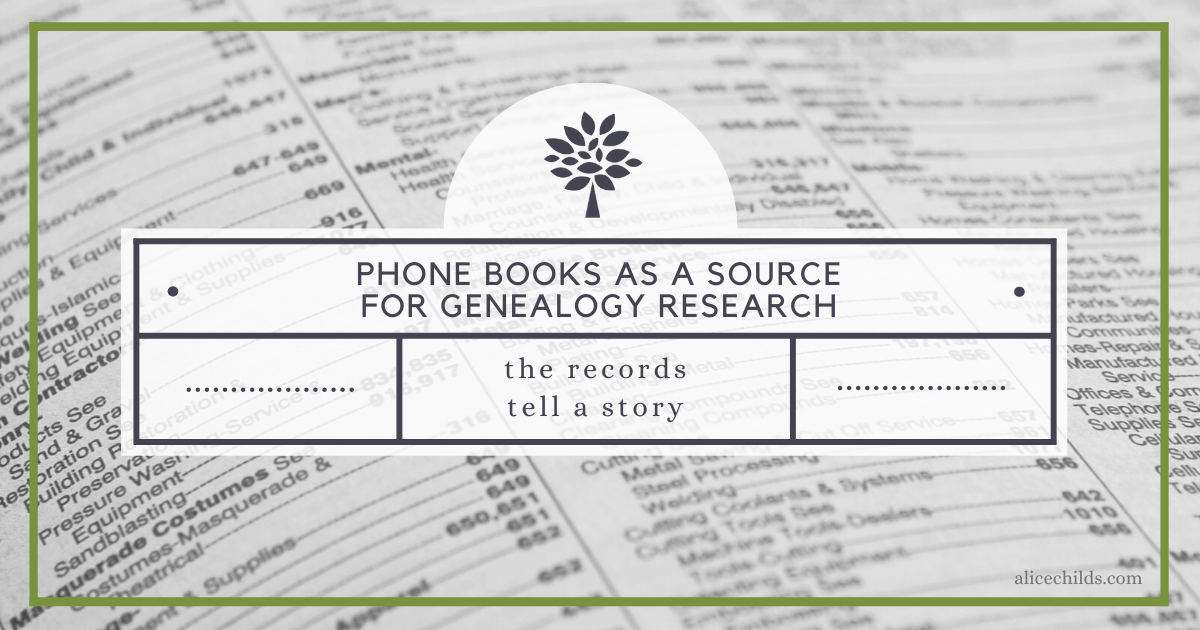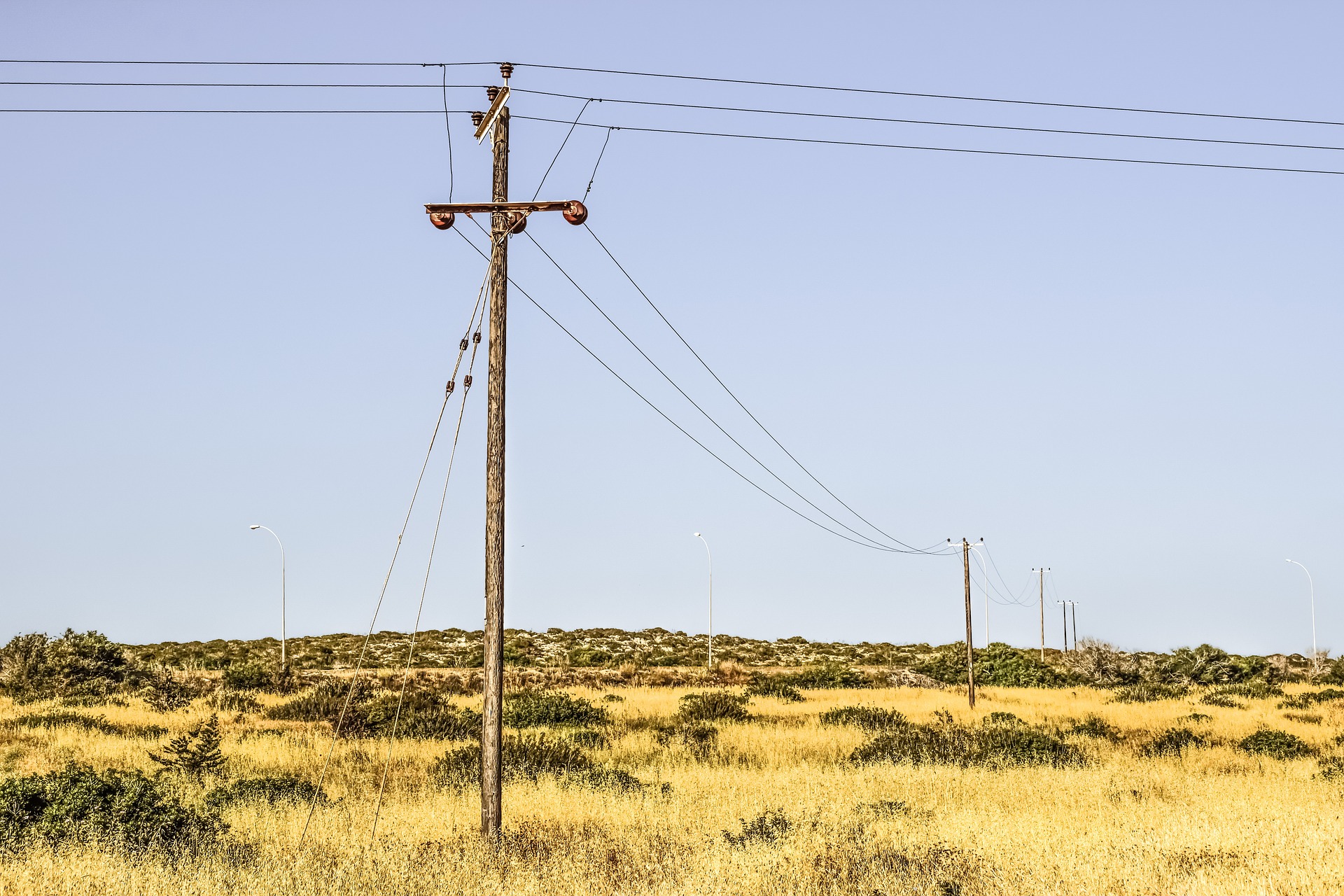
Who remembers stretching the long cord of the kitchen telephone into another room so you could close the door and talk on the phone with your friends in private?

Did you ever purchase an extra-long cord to plug into the phone jack so you could carry the phone from room to room and continue talking, no matter where you were in the house? I am guilty on both accounts and when I saw this week’s #52Ancestors prompt, telephone lines were the “long lines” that immediately came to mind.
For years, thousands of miles of phone lines have connected people all over the world.

Don’t forget the millions of miles of phone wires housed in telecom buildings all over the country. My grandparents had a part-time job cleaning the local Mountain Bell office in their small town of Lovell, Wyoming. I loved going with them and seeing the racks of wires and hearing them click as they carried conversations between houses. To a young child, it was amazing to get a behind-the-scenes look at such an ordinary household commodity.

The advent of cell phone service and unlimited talk and text options from cell phone providers have virtually eliminated long-distance bills, but I well remember the days of budgeting for phone calls to my parents, watching the clock as I talked to not spend more than what I had budgeted as we used those lines to stay in touch.
While I am thankful for the ease and mobility as well as cost-effectiveness we enjoy with mobile phones, it is good to remember that long lines have connected people for generations, and with that connection came a set of valuable records: telephone books.
The Value of Telephone Books for Genealogical Research

Like city directories, telephone books are a great way to trace a person in the 10-year gap between censuses. Included are names, addresses, and phone numbers. The head of the household was usually the only family member listed in the directory. Occupations might be discovered by looking at business listings included in the phone book.
Telephone books can also help you learn about the community where your family members lived. They may include listings for cemeteries, membership organizations, churches, and schools in the community, providing clues for new avenues of research.
Time periods covered by telephone books:
The first telephone book was created in 1878 and contained just 50 names and no telephone numbers. The purpose of early telephone books was simply to provide the names of subscribers.
Telephone directories AND city directories were both published from 1878 until the mid-20th century because telephones were not widely used in their early history. City directories listed every person in a town whether or not they had telephone service. Once telephones became a household commodity, phone books replaced city directories.
Where to find telephone books:
- Digitized book websites like Google Books and Internet Archive
- Digital Public Library of America
- Old Telephone Books website
- Library digital collections may have digitized phone books for their area
- Find My Past has a searchable database titled “Postal & Telephone Directories”
- Ancestry has a searchable database titled “Telephone Directories” that contains an extensive collection of phone directories.
Ancestry provides the following tips for searching their phone book database:
- If you know your ancestor’s occupation, check for a section of the directory listing phone numbers by profession. You may even find an advertisement for their business.
- Only search for your ancestor’s surname. Since the entries are alphabetical you’ll see all of the people with that surname and you don’t run the risk of missing your ancestor if his given name is abbreviated.
- In collections that contain directory images, be sure to use both the browse and search functions. Browsing lets you view a directory page-by-page as you would if you were looking at the actual book. Check the table of contents to see what types of information were included. You may find street directories, lists of advertisements (which may include your ancestor’s business), lists of government offices, charitable organizations, churches, cemeteries, hotels, maps, and much more. The table of contents is your guide to the contents and using the page numbers found in the index, you can navigate easily to sections of interest.
- Remember that many people share the same names, so when you find your ancestor in a city directory, be sure to use other sources like censuses or family records to confirm that the address and occupation match.
- Once you’ve found your ancestor in a directory, take the time to look at the addresses and occupations of other people who share their surname. You might find relatives living in neighboring houses or working in the same industry.
- Once you’ve located an ancestor in a telephone directory, enter the street address (in quotes) into the keyword field. This will bring up other residents of that address, which may include in-laws and other family members.
I have often used city directories in my research, and learning more about using telephone books for genealogy research has generated excitement to add this record type to my toolkit. How have you used telephone books in your research?
Supplemental Reading:
“Genealogy Workbook: Directories” at Family Tree Magazine
“Genealogy 101: Using Telephone Books for Genealogy” at Genealogy Bank
